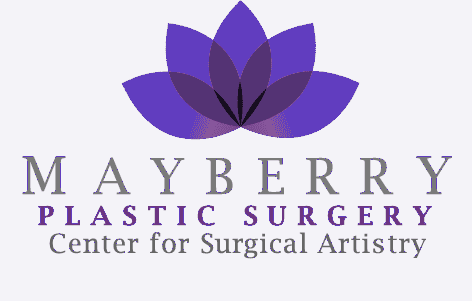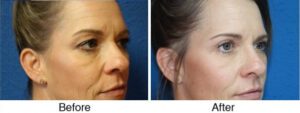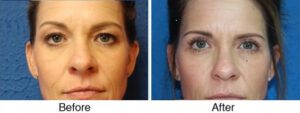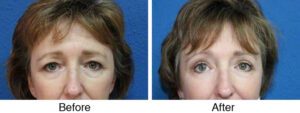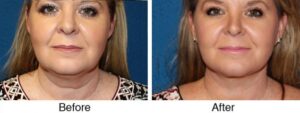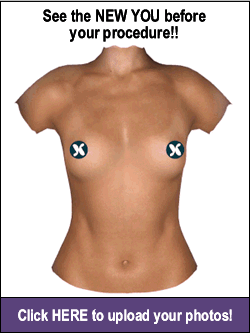How is a blepharoplasty performed?
A blepharoplasty can performed on either the upper and lower lids, or both. An eyelid surgery can treat loose or sagging skin, excess fatty deposits that appear as puffiness, bags under the eyes, and excess skin and fine wrinkles of the lower eyelid. The excess skin and fat pads are marked, the areas anaesthetized and the excess tissue removed. It is then closed with absorbable sutures.
What is the recovery like after a blepharoplasty?
You may experience bruising, swelling, tightness, dryness, and itching of the eyelids. You will have sutures in that will be removed about one week after surgery. Your vision may be blurred for a few days after the surgery.
Will insurance cover a blepharoplasty?
Insurance can pay for a blepharoplasty in some cases. If your upper eyelids are impairing your vision it may be considered a medically necessary procedure. You will need to see your Ophthalmologist to have a field of vision test to verify the vision impairment. You will need to contact your insurance provider to discuss your benefit plan for more details. Insurance will not cover a lower eyelid surgery unless a significant droop causing eyeball irritation occurs.
What type of anesthesia is used for a blepharoplasty?
Eyelid surgery is usually performed under local anesthesia with oral sedation. Local anesthesia numbs the area around your eyes. You will be awake during the surgery, but relaxed.
What are the risks of a blepharoplasty?
Possible risks of eyelid surgery include: infection, bleeding difficulty closing your eyelids, injury to eye muscles, skin discoloration, and temporary blurred vision or extremely rarely, blindness.
Will a lower blepharoplasty help with the dark circles under my eyes?
In most instances it can improve but not completely eliminate discoloration.
Is there another alternative to a blepharoplasty?
Yes, we do offer other options for eye rejuvenation if you are not ready for surgery. Non-surgical options include volume restoration with Restylane, AccuTite and Morpheus8 radio frequency treatments, chemical peels, and cosmeceuticals.
When will I be able to see the final results?
Immediately after the surgery you will see results, but final results can usually be seen at two to three months after surgery. It takes a couple of months for the incisions to completely heal, and most of the swelling is gone within the first month.
Will a brow lift correct the upper eyelids?
If there is eyebrow drooping in addition to drooping eyelids, then a brow lift is highly suggested for optimal results
